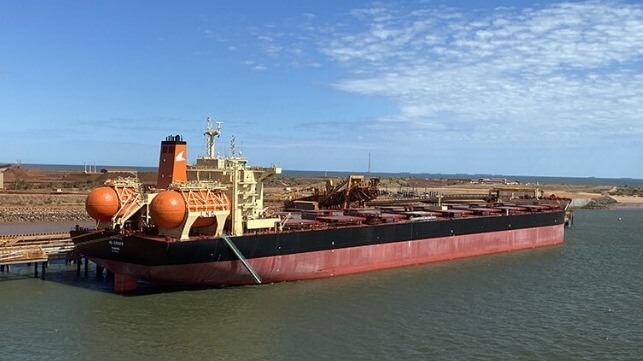SEA-LNG Reports LNG Ships Offer Long-Term Carbon Rating Advantage

With the debate over the long-term role of liquified natural gas in the shipping industry continuing, industry trade group SEA-LNG released new data showing that LNG fueled vessels will achieve a better carbon intensity rating as the IMO move forward with Carbon Intensity Indicator. According to the new analysts, LNG-fueled ships will be able to continue normal operations after 2030 while receiving higher ratings and can achieve long-term compliance through the adoption of bioLNG.
The shipping industry has turned to LNG to be at least a bridge fuel as it is available today and reduces emissions. However, critics of LNG have long said that the fuel was being promoted with inflated environmental performance citing critical factors such as methane slip. While the concerns remain while measuring the full well to wake approach, the industry points to the fact the new generation high-pressure engines have reduced and eliminated the concerns of slip. The potential also remains to further improve the fuel’s life cycle through further improvements in production as well as the advancement of bioLNG.
Near-term the shipping industry faces new challenges as the IMO moves forward with the rollout of the Carbon Intensity Indicator. CII is a gauge of how efficiently all ships transport cargo measured in grams of CO2 emitted per deadweight ton capacity and nautical mile. Coming into effect in 2023, vessel operators will be required to provide a baseline performance and receive initial ratings in 2024. Ships’ carbon intensity will be rated on a scale of A to E with the CII thresholds tighten annually and requiring operators to document vessels.
SEA-LNG in launching its analysis noted the belief that the adoption of the CII ratings is set to shake up the vessel efficiency and emissions clauses in the charter party agreements from 2022 onwards. With shippers becoming increasingly conscious of the carbon impact across the broader aspects of their business and committing to reduce and eliminate emissions for their business practices, ships are expected to come under increasing pressure as they report their CII ratings. Further, the IMO is encouraging ports, governments, and other stakeholders to incentivize ships based on their ratings.
The analysis compared emissions for two identical 180,000 dwt Capesize vessels, one using conventional, oil-based HFO marine fuels the other using LNG as a marine fuel. The report shows that the LNG-fueled vessel immediately rated two grades higher than the conventionally fueled vessel. According to the trade group, LNG can be the difference between having a ‘moderate’ C-rated ship and having a ‘major superior’ A-rated ship on the IMO’s CII scale.

that matters most
Get the latest maritime news delivered to your inbox daily.
LNG-fueled vessels the analysis says can also gain improved carbon intensity ratings by adopting drop-in carbon-neutral bioLNG in the short to medium term, or zero-carbon renewable synthetic LNG in the longer term. For example, they reported that for every 10 percent increase in the content of these fuels in a blend with traditional LNG, the vessel gains two years of additional compliance. SEA-LNG contends that by using bioLNG and renewable synthetic LNG, a vessel can retain a favorable CII rating as major superior A or superior B throughout its lifetime.
John Hatley, SEA-LNG Investment Committee Chairman, commented: “Clearly, LNG will offer a competitive advantage to ship owners and operators as charterers prefer engaging the higher-performing A and B rated vessels necessary to meet their own GHG emission reduction commitments. Adding bio-LNG or renewable synthetic LNG, both fully interchangeable with fossil LNG in LNG-fueled vessels and bunkering infrastructure, will enable maintenance of this advantageous rating level over the life of the vessel and ensure that owners are not left with stranded assets.”
